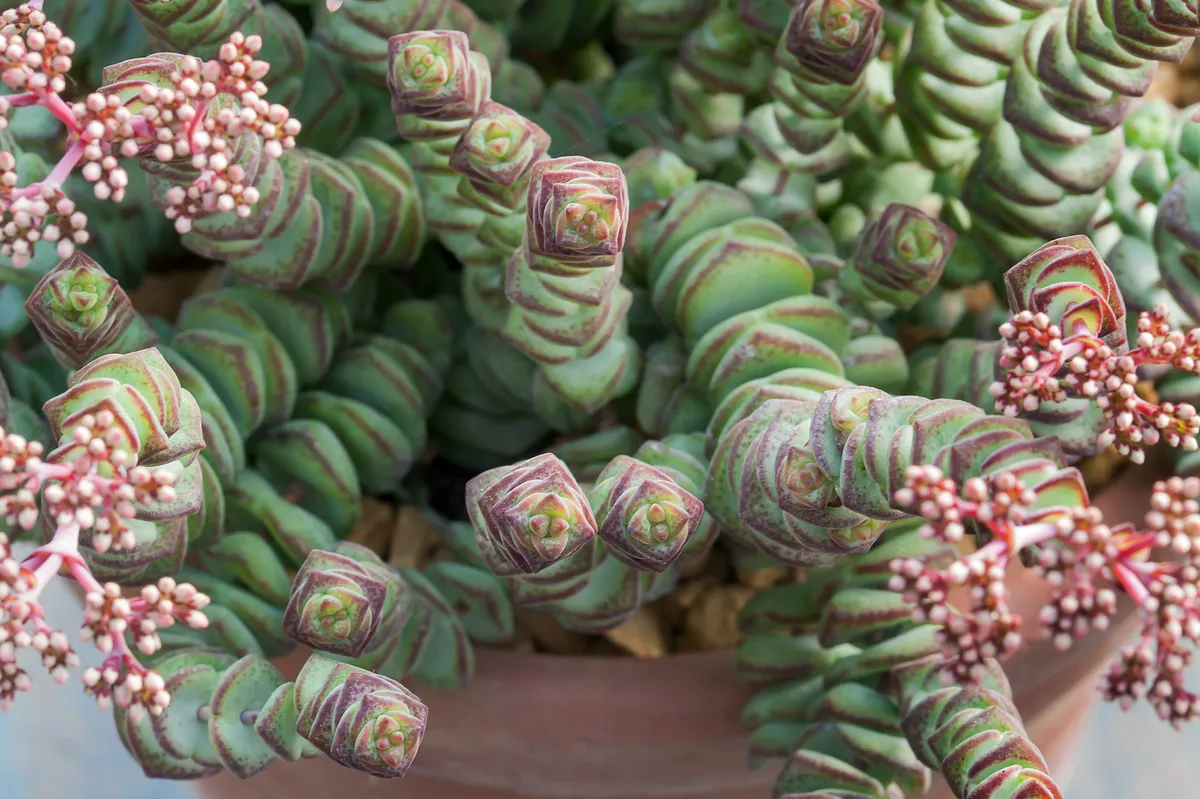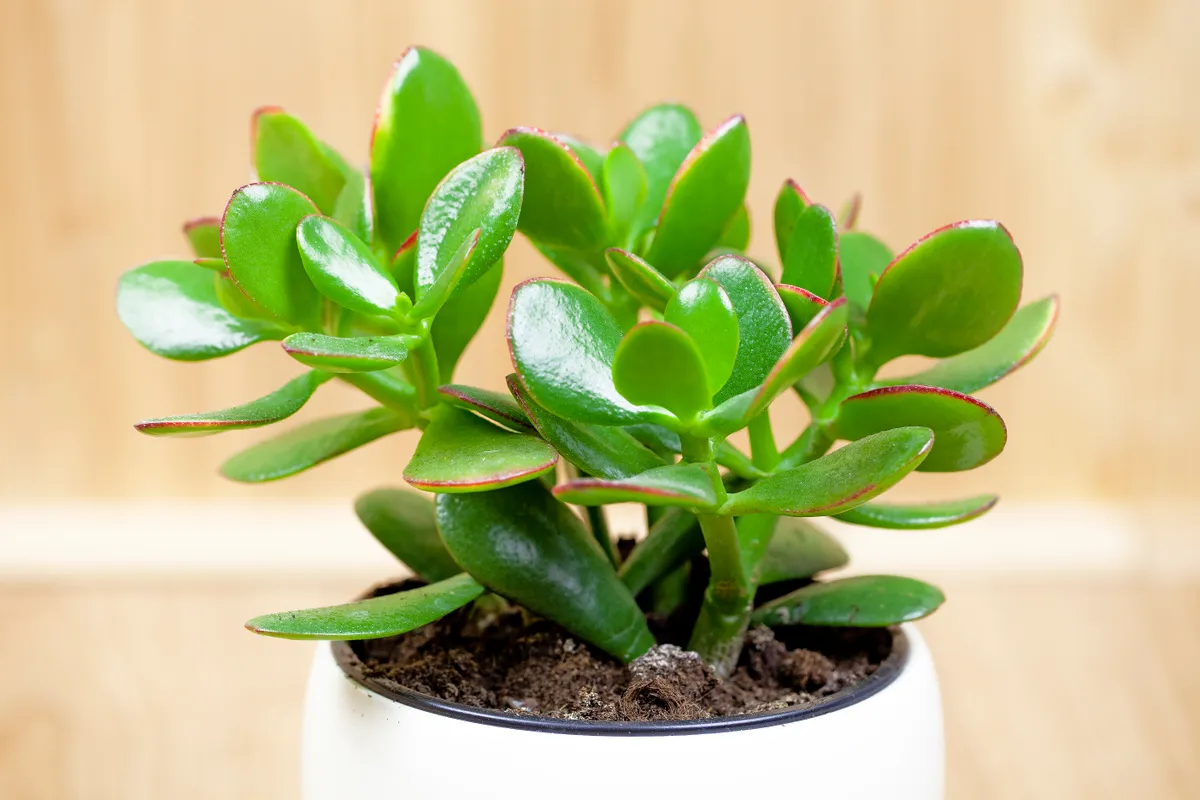Crassula make extremely good houseplants. They are easy to grow and, provided you allow them enough light and don’t overwater them, they look fabulous but don’t need a lot of care. The genus is quite varied and includes annual, deciduous, tuberous and aquatic plants. They are found all over the world with approximately 95 species growing in South Africa. They are more diverse than any other succulent group with varying shapes, textures, habits and colours.
Crassulas: everything you need to know
How to propagate crassula
Propagating crassulas is a great way to add to your collection. Take leaf cuttings by gently breaking the leaf away from the stem and leave to callus over for a day or two. Then, pop in a propagation tray of sand, or a generic cacti mix, on a bright windowsill. Roots should emerge in a few weeks, although they can be slow to establish.
Why crassula makes the best house plants
Like most drought-tolerant plants, crassulas have physically adapted to inhabiting unforgiving environments. They use their leaves to store water, which is what gives them their succulent, fleshy appearance. But when it comes to limiting water loss, crassulas have another trick: a process known as crassulacean acid metabolism, or CAM for short. Normally in photosynthesis, plants take in CO2 during the day through their stomata (pores in the leaves) and lose water while these pores are open.
In CAM plants, the stomata open only at night, when CO2 is taken in and stored as crassulacean acids. During the day these acids are broken down and the CO2 is used in the photosynthetic cycle. This mechanism means that crassulas and other CAM plants lose considerably less water while still being able to photosynthesise normally during the day. All of which makes them an ideal plant for a new houseplant enthusiast, as you can happily forget to water them for a little while without it becoming a problem.

How to grow crassula
Best compost for crassula
Crassulas need a free-draining, coarse growing media. For best results I always use a rich compost, such as John Innes No.3, and mix this with coir, perlite and a lot of grit. The most important thing to remember is not to overwater as they are prone to rotting as a result.

How to water crassula plants
To water, always submerge the pot completely in a sink of water for at least 15 minutes but up to an hour, fully saturating the soil and then allow it to drain. You should always wait until the soil dries out completely before watering the plant again, although also keep an eye on their succulent leaves, which tend to go wrinkly and less plump when they need watering. I do this once a week during the summer months and less often in the winter.
Feed
Feed crassulas sparsely with balanced liquid fertiliser in the growing season, which is early to midsummer. Light should be as bright as possible, so try to place them in the brightest spot in the house – preferably a south-facing window.
Pests
Note that all succulents are susceptible to mealybugs and aphids. If you spot them, you can either pick them off by hand or gently rub them off under the tap or with a small paintbrush.
The best crassulas to grow

Crassula ovata and Crassula arborescens are the most popular species and are the easiest to grow indoors. Crassula ovata is an evergreen shrub that grows up to two metres in height. The succulent leaves are glossy, in various shades of green and are arranged in opposite pairs. Crassula arborescens has strikingly grey-blue, silvery foliage with a reddish, purple margin. Reaching a height of two to three metres, it is very thick and fleshy and has distinct freckles on the upper surface of each leaf.
More unusual crassulas worth growing are Crassula rupestris subsp. marnieriana (above), especially the cultivar ‘Contorta'. With its long trailing stems of leaves up to 15cm long that look like dreadlocks or tardigrades, this species, known as the jade necklace vine, works well grown in a hanging pot. Another worth looking out for is Crassula tetragona (the miniature pine tree), which has needle-like succulent foliage that is apple green. It grows up to around a metre.
Where to buy crassula plants
Cactus Shop
cactusshop.co.uk
Surreal Succulents
surrealsucculents.co.uk
Here's our round up of the best plant subscriptions